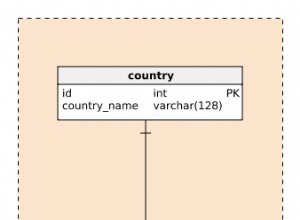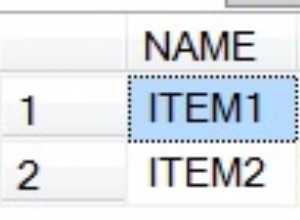Eine Option, die ich empfehle, ist die Verwendung von common_schema
und insbesondere Funktionen get_num_tokens()
und split_token()
, das wird helfen.
Hier ein einfaches Anwendungsbeispiel, das Sie für Ihre Lösung anpassen können:
/* CODE FOR DEMONSTRATION PURPOSES */
/* Need to install common_schema - code.google.com/p/common-schema/ */
/* Procedure structure for procedure `explode1` */
/*!50003 DROP PROCEDURE IF EXISTS `explode1` */;
DELIMITER $$
CREATE PROCEDURE `explode1`(str varchar(65500), delim VARCHAR(255))
BEGIN
DECLARE _iteration, _num_tokens INT UNSIGNED DEFAULT 0;
DROP TEMPORARY TABLE IF EXISTS `temp_explode`;
CREATE TEMPORARY TABLE `temp_explode` (`id` INT(10) UNSIGNED NOT NULL AUTO_INCREMENT, `word` VARCHAR(200), PRIMARY KEY (`id`));
SET _num_tokens := (SELECT `common_schema`.`get_num_tokens`(str, delim));
WHILE _iteration < _num_tokens DO
SET _iteration := _iteration + 1;
INSERT INTO `temp_explode` (`word`) SELECT `common_schema`.`split_token`(str, delim, _iteration);
END WHILE;
SELECT `id`, `word` FROM `temp_explode`;
DROP TEMPORARY TABLE IF EXISTS `temp_explode`;
END $$
DELIMITER ;
/* TEST */
CALL `explode1`('Lorem Ipsum is simply dummy text of the printing and typesetting', CHAR(32));




